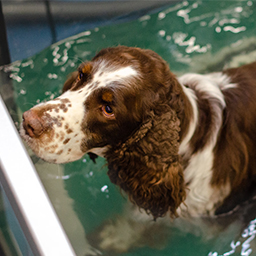Aquatherapy / Hydrotherapy and Kingvet
Text: Mgr. Jaroslava Cábová, CertCAAPR, Photo: archive Aqua Dog
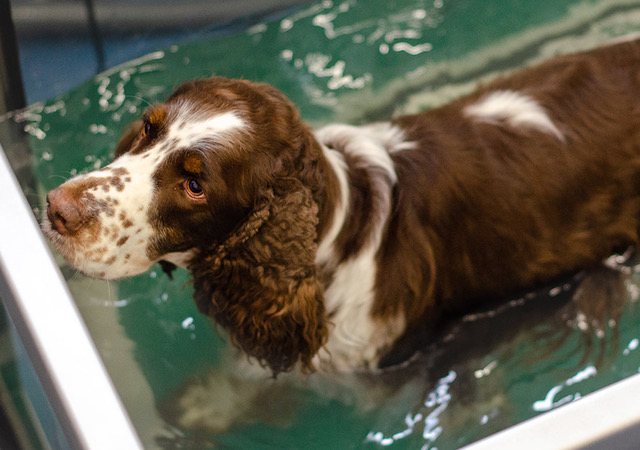
Physiotherapy and rehabilitation for animals focuses on the diagnosis, treatment, and prevention of functional disorders of the musculoskeletal system, both in orthopedic and neurological patients, not only after surgery, but also as part of conservative treatment.
They are suitable for conditions that limit the mobility of dogs, especially, and they significantly affect and accelerate recovery in post-traumatic and post-operative conditions, reducing pain in the musculoskeletal system and thereby reducing the amount of analgesics administered, thus significantly protecting the digestive system. They improve the movement abilities of the dog, as well as their general physical and mental state.
Goals of physiotherapy and rehabilitation
The aim of physiotherapy and rehabilitation is to increase or maintain the range of motion (ROM), strength, speed, coordination and movement control. The main objectives are:
- improving the painless range of motion and flexibility
- improving proprioception, or body position
- improving the use of limbs and loading them with the correct weight transfer
- reducing lameness
- improved muscle and muscle strength
- reducing the spinal (or skeletal) atrophy of muscles
- improving and increasing fitness, specifically endurance, speed and acceleration
- eliminating risk and preventing further injuries
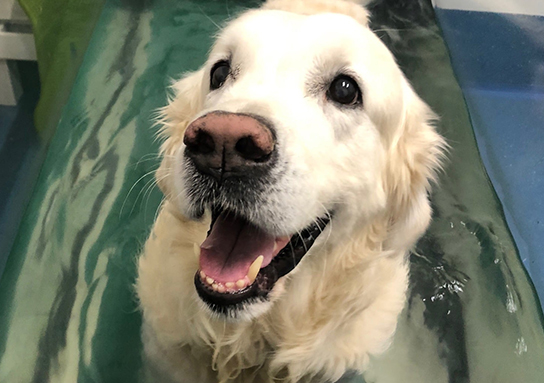
Aquatherapy/hydrotherapy
Aquatherapy is a very effective and pivotal method that helps as a non-invasive adjunct to treatment in neurological and orthopedic patients and also serves as a form of prevention or fitness exercise in dogs recovering from injuries and surgical operations, in senior dogs, and in dogs suffering sporting stress. It is absolutely integral in the treatment of dog obesity.
„Physical exercise can replace many drugs, but no medicine in the world can replace physical exercise.“
Mosso
The therapy works on the principle of the animal’s controlled movement on a moving underwater belt with adjustable speed. Physical properties such as water temperature, buoyancy, or water resistance are used in the rehabilitation. The buoyancy of the water makes the animal lighter, and thus puts less strain on the joints. Active movement is therefore comfortable for the animal; in particular, it is much less painful, and thus motivates the animal to cooperate more in rehabilitation. The principle of water buoyancy is also used primarily in neurological paralysis patients, as the desired movement pattern is easier to achieve in a state of reduced pain.
Thanks to water resistance, the dog strengthens flaccid muscle parts that are very difficult to strengthen in a “dry” environment under the influence of gravity and while feeling pain under the load of their own body weight. Aquatherapy generally significantly improves the condition of the dog. It comes together with the possibility of additional optional counterflow, which increases the intensity of movement during therapy. This improves overall ROM, increasing the range of motion of individual joints and muscle mass, strengthening muscles, and stabilizing joints and the spine. We support the proper biomechanics of movement, and importantly, to that end, we are also working on developing and improving the fitness of the cardiovascular system and respiratory capacity.
The basis for the successful use of aquatherapy in dogs lies in taking an individual approach. Length of therapy, speed, water level, and thus the precise use of the physical properties of the water, and the strength and direction of the countercurrent are all important variables.
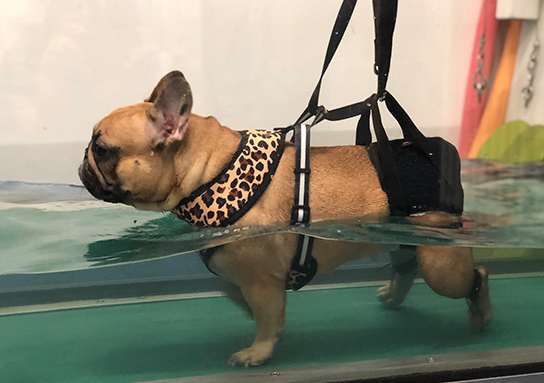
What can we do to support aquatherapy?
Alongside therapy and training on an underwater hydrotherapeutic belt, we also administer Kingvet, which helps us heal fractures and injured tendons not only in orthopedic patients after surgery, but also in the conservative treatment of hip dysplasia (using auxiliary preparations Imunovet and Skelevet). In neurological patients it helps skin, soft tissues, bones and joints to heal (Imunovet). In sports dogs, and also in seniors, it promotes muscle growth by acting as an anabolic agent (regular training stimulation is required, auxiliary preparation Gynevet – alternation with Kingvet).
It will also strengthen the effects of training in racing dogs (auxiliary preparations Skelevet, Omegavet).
Author of the article
Mgr. Jaroslava Cábová, CertCAAPR
Physiotherapist and rehabilitation worker for small animals at the center Aqua Dog, s.r.o., and a certified member and inspection committee member of the Czech Association of Animal Physiotherapy and Rehabilitation, certified Energyvet consultant specializing in the physiotherapy and rehabilitation of orthopedic and neurological patients with a focus on walking through learned reflex.
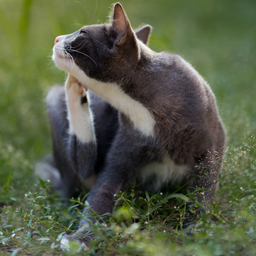
Tickvet
Tickvet is a natural veterinary product to repel bloodsucking insects, especially fleas and ticks.
Read the article
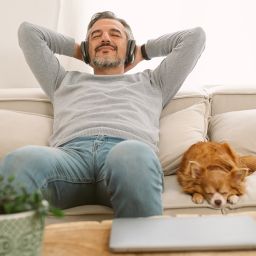
Psychosomatics in veterinary medicine
Psychosomatics is nowadays a recognized field of medicine, especially in human medicine, but also in veterinary medicine is...
Read the article
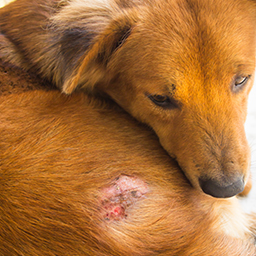
Imunovet and healing of open wounds
There are situations where it is not reasonable to put the dog under anesthesia to suture the laceration. Or situations where...
Read the article
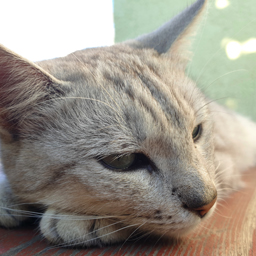
Hyperthyroidism of cats
Hyperthyroidism, or pathologically elevated thyroid function, is the second most common endocrinopathy in cats. The cause is usually...
Read the article
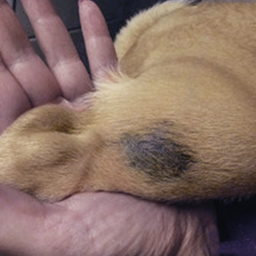
Patch after tick bite, coat renewal
The castor bean tick, Ixodes ricinus, is an arachnida known to belong to the Ixodidae family. We know...
Read the article
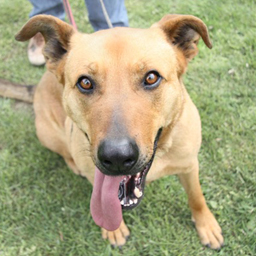
Dogs in Heat
IT’S SPRING... and with it female dogs being in heat. Or what to do with the male dog when the female dog is in heat?
Read the article
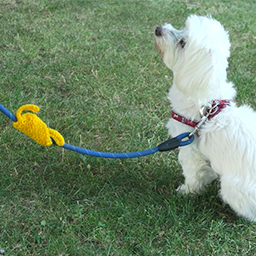
Yellow ribbon
A yellow bow or ribbon indicates a dog who, for a variety of reasons, needs to be given space.
Read the article
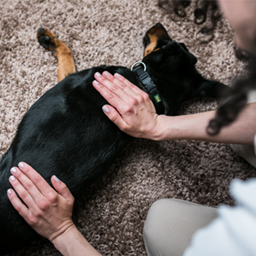
Touches that bring relief
When I first applied a butterfly massage to an animal, I believed in its power. Not by chance did I find ...
Read the article
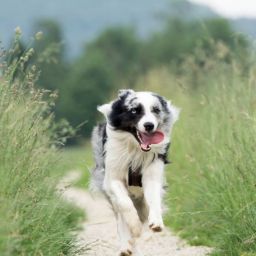
Ticks
It is spring, it is getting warmer, and we need to think about protecting our four-legged friends from ticks. And since we will now be seeing more of ...
Read the article
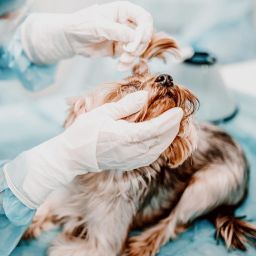
Eye examination in animals
The examination of animal eyes is very similar to the examination of human eyes and should be part of the basic examination, as general disease is associated with ocular involvement in many cases.
Read the article
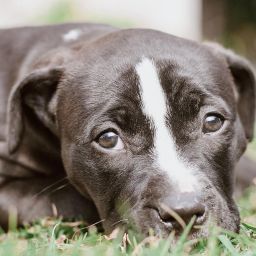
Warts on puppies
Warts on young dogs are most often of infectious origin, caused by the papillomavirus. They are contagious to other dogs (not to other animal species or humans).
Read the article
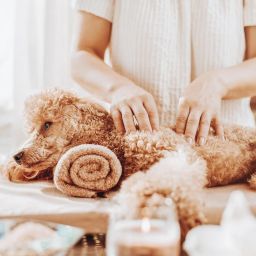
Metamorphic technique for animals
The metamorphic technique, known as butterfly massage, is a gentle harmonizing technique that is applied to the spinal reflex zones on the feet, hands and head in humans.
Read the article
